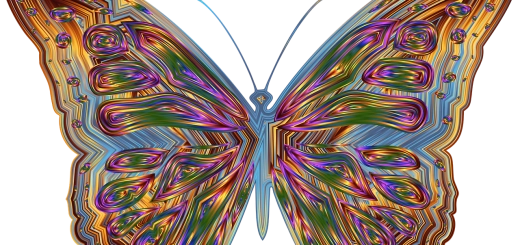Unsolved Mysteries of the Great Sphinx of Giza

Looking for more amazing products? Check out our online store and explore our collection here! Happy shopping!
Before diving in, please note: This post is for informational purposes only. If you’d like to know more about how we approach topics, feel free to check out our friendly Disclaimer Page.
Hey there, amazing readers! 
We’re committed to delivering quality posts, and your support (even just sticking around despite the ads) means everything to us. So, bear with us, and thanks for helping us keep the good vibes rolling. Now, on to the fun stuff!
TRANSLATE BUTTON AT THE END OF THE ARTICLE
A Quick Overview
The Great Sphinx of Giza, a colossal statue with a lion’s body and a human head, has captivated the imagination of countless people for centuries.
Located on the Giza Plateau near the Pyramids, this ancient wonder is shrouded in mystery and intrigue.
Many questions linger about its origins, purpose, and the secrets it may hold.
In this article, we’ll dig deep into the unsolved mysteries surrounding this iconic monument, exploring everything from its construction to its cultural significance today.
Introduction to the Enigmatic Great Sphinx of Giza
The Great Sphinx stands tall, an impressive figure that has lazed in the Egyptian sun for millennia.
With its serene gaze fixed towards the east, it seems to watch over the land of the pharaohs.
As a significant symbol of ancient Egypt, the Sphinx has sparked curiosity and debate among historians, archaeologists, and tourists alike.
Its sheer size is enough to take your breath away—about 66 feet high and 240 feet long—making it the largest monolithic statue in the world!
What’s more intriguing is the fact that the Sphinx was carved from a single piece of limestone.
It’s like a giant sculpture that woke up from a dream, ready to tell us its story.
Yet, despite the wealth of research conducted over the years, many aspects of the Sphinx remain enigmatic.
How did ancient Egyptians create such a masterpiece?
What does it represent?
And why is it still a source of fascination today?
A Brief History: When and Why Was It Built?
The Sphinx is believed to have been constructed during the reign of Pharaoh Khafre, around 2500 BCE.
But why?
Theories abound.
Some scholars argue it served as a guardian to the nearby pyramids, standing sentinel over the tombs of the pharaohs.
Others suggest it was built to honor the sun god Ra.
Given its alignment with the rising sun, this theory carries much weight.
But the ambiguity doesn’t stop there.
Some researchers propose that the Sphinx might predate Khafre’s reign.
Radiocarbon dating of the surrounding artifacts has led to debates about its true age.
Could it be older than we think?
That’s a tantalizing thought, isn’t it?
Additionally, the historical context of ancient Egypt adds another layer of complexity.
The Sphinx was likely created during a time of immense cultural and architectural advancement.
The Egyptians were not just building for practicality; they were creating symbols of their beliefs, values, and power.
Architectural Marvel: The Sphinx’s Stunning Design
The Sphinx is not just a statue; it’s an architectural wonder.
Its design embodies the artistic prowess of ancient Egyptian civilization.
The statue’s lion body signifies strength and power, while the human head represents intelligence and wisdom.
But what strikes me most is the way it harmonizes with its surroundings, an ancient sentinel watching over the sands of time.
The craftsmanship is awe-inspiring.
The limestone blocks were quarried locally, and the Sphinx was shaped using simple tools, showcasing the incredible skill of ancient artisans.
They must have worked tirelessly, carving away to reveal the majestic figure we see today.
Imagine the labor, the sweat, and the dedication that went into this creation!
Interestingly, the Sphinx was originally painted with bright colors, although much of that has faded over time.
Some believe it was adorned with a beard and a royal nemes headdress, adding to its grandeur.
Excavations suggest that there may also have been additional sculptures or temples around it.
The Riddle of the Sphinx: Who Was Its Creator?
Who really created the Sphinx?
Was it Khafre, as many believe, or perhaps another ruler?
This question has puzzled scholars for ages.
The historical records from the time are scarce, making it tough to pinpoint its creator definitively.
Most Egyptologists favor Khafre due to the proximity of his pyramid and the inscriptions found in the area.
However, there are alternative theories that suggest involvement from other pharaohs or even a collective effort.
Could the Sphinx be a product of a team of skilled artisans who pooled their talents?
It’s a fascinating notion that speaks to the collaborative spirit of ancient Egypt.
Moreover, the Sphinx’s construction techniques are still debated.
Some researchers have proposed that the Sphinx was carved directly from the limestone bedrock, while others suggest that it was built with blocks like the pyramids.
The truth remains elusive, leaving us wondering about the ingenuity of those ancient builders.
Theories About the Sphinx’s Original Purpose
The purpose of the Sphinx remains one of its most captivating mysteries.
While many agree it served as a guardian to the pyramids, others propose additional functions.
Some theorists believe it was meant as a symbol of royal power, a monument that embodied the pharaoh’s connection to the divine.
Additionally, others suggest an astronomical alignment, as the Sphinx faces the rising sun.
This theory ties it to the ancient Egyptians’ deep reverence for celestial bodies.
The Sphinx might have been part of a larger cosmological framework, serving rituals tied to the sun god Ra.
There are even modern interpretations that delve into the spiritual and metaphysical aspects of the Sphinx.
Some believe it could have been a place of initiation or enlightenment.
Could it have been a spiritual waypoint for ancient civilizations, guiding them towards higher knowledge?
The possibilities are endless, and that’s what makes it so intriguing.
Secrets Beneath: Has the Sphinx Been Excavated?
The Sphinx has undergone various excavations, but many believe that it still holds secrets beneath its feet.
Over the years, archaeologists have unearthed tunnels and chambers around the Sphinx, but much of the underground remains unexplored.
In the 1930s, a team led by the Egyptologist Selim Hassan conducted extensive studies, uncovering some fascinating artifacts.
Yet, major excavations remained limited due to fear of damaging the structure.
Modern technology has opened new avenues for exploration.
Ground-penetrating radar and other advanced techniques promise to reveal hidden chambers without disruptive digging.
Imagine what treasures or historical artifacts might lie just beneath the surface!
The anticipation is palpable.
The Enigma of the Sphinx’s Nose: What Happened?
One of the most recognizable features of the Sphinx is its nose—or lack thereof.
The Sphinx’s nose has been missing for centuries, sparking countless theories about its fate.
Some believe it was deliberately destroyed by iconoclasts during the rise of Islam, while others argue it was simply eroded over time.
Contemporary evidence suggests that the nose was intact as late as the 15th century.
Reports indicate that it was damaged by a cannonball during Napoleon Bonaparte’s Egyptian campaign, adding another layer to the mystery.
The Sphinx without its nose has become an iconic image, a reminder of the passage of time and the impacts of human actions.
It raises questions about preservation and respect for ancient artifacts.
How many more mysteries have been lost to neglect or ignorance?
Theories Surrounding the Sphinx’s Missing Body Parts
In addition to its nose, other body parts of the Sphinx have also been subjects of speculation.
Some argue that the Sphinx originally had a beard, further enhancing its regal appearance.
Pieces of stone found nearby may be remnants of this lost adornment.
Moreover, theories suggest that the Sphinx once had a more elaborate structure, possibly including intricate carvings or additional sculptures.
The fact that only parts of it remain prompts one to ponder: What else has been lost to time?
The loss of these features has spurred a myriad of artistic interpretations throughout history.
Many paintings, sculptures, and even films have depicted the Sphinx in its full glory.
It’s fascinating how art breathes new life into something that has lost its physical attributes.
Ancient Texts: Clues to the Sphinx’s Mystique
Ancient texts provide some clues to the Sphinx’s significance.
The writings of the Greek historian Herodotus mention the Sphinx, noting its size and grandeur.
He described it as a guardian of the pyramids, reinforcing the idea that it served a protective function.
Furthermore, the Pyramid Texts, inscribed on the walls of royal tombs, reference the Sphinx indirectly.
These texts hint at a connection between the Sphinx and the afterlife, suggesting it may have played a role in funerary rituals.
The legends and stories surrounding the Sphinx continue to evolve with time.
Each discovery of ancient writings or inscriptions adds more depth to its narrative.
The tales we tell about the Sphinx reveal much about the culture and beliefs of ancient Egyptians.
The Connection Between the Sphinx and the Pyramids
The Sphinx is inextricably linked to the Pyramids of Giza, forming a majestic ensemble that speaks volumes about ancient Egyptian civilization.
Each structure complements the other, with the Sphinx serving as a sentinel to the pyramids, embodying the harmony of art and architecture.
Scholars have pointed out that the Sphinx, the pyramids, and other nearby structures were likely part of a larger religious complex.
They believe these monuments were aligned with celestial events, enhancing their spiritual significance.
Moreover, the sheer proximity of the Sphinx to the pyramids raises questions about the logistics of construction.
How did the ancient Egyptians manage to build such monumental structures with limited technology?
The connection between them reveals not just architectural brilliance but also a deep understanding of mathematics and astronomy.
Modern Technology: Uncovering Hidden Mysteries
In recent years, technological innovations have breathed new life into the study of the Sphinx.
Techniques like 3D scanning, thermal imaging, and ground-penetrating radar have allowed researchers to explore without disturbing the monument.
For instance, thermal imaging has revealed temperature variations in different areas of the Sphinx, suggesting the presence of hidden chambers. 3D modeling provides insights into the structure’s deterioration, helping conservators develop preservation strategies.
These advancements offer a glimpse into the future of archaeology.
As technology evolves, so do our methods of discovery.
It’s thrilling to think about what we might uncover next!
The Sphinx Today: Cultural Significance and Tourism
Today, the Great Sphinx of Giza stands as a symbol of ancient Egypt and draws millions of tourists each year.
It’s more than just a tourist attraction; it represents a bridge to our past, a reminder of human ingenuity and cultural legacy.
The Sphinx remains a focal point for discussions about heritage preservation.
I often find myself wondering how we can balance the influx of visitors with the need to protect such an invaluable piece of history.
Cultural significance extends beyond tourism; the Sphinx inspires art, literature, and even pop culture.
It’s a muse that has sparked the imaginations of countless artists and writers.
Its image appears in everything from movies to video games, showing its enduring impact.
In recent years, efforts to promote awareness about the Sphinx’s history and significance have increased.
Educational programs aim to instill respect for this monumental piece of heritage, fostering a deeper understanding among visitors.
Conclusion
The Great Sphinx of Giza continues to be a source of fascination and mystery.
Its rich history, stunning design, and cultural significance remind us of the incredible achievements of ancient civilizations.
As we advance technologically and uncover more about the past, one thing remains clear: the Sphinx will forever hold a special place in our hearts and minds.
The mysteries surrounding it only add to its allure, inviting each new generation to ponder its secrets.
What will future discoveries reveal?
Only time will tell!

The Enlightenment Journey is a remarkable collection of writings authored by a distinguished group of experts in the fields of spirituality, new age, and esoteric knowledge.
This anthology features a diverse assembly of well-experienced authors who bring their profound insights and credible perspectives to the forefront.
Each contributor possesses a wealth of knowledge and wisdom, making them authorities in their respective domains.
Together, they offer readers a transformative journey into the realms of spiritual growth, self-discovery, and esoteric enlightenment.
The Enlightenment Journey is a testament to the collective expertise of these luminaries, providing readers with a rich tapestry of ideas and information to illuminate their spiritual path.
Our Diverse Expertise
While our primary focus is on spirituality and esotericism, we are equally passionate about exploring a wide range of other topics and niches 

To ensure we provide the most accurate and valuable insights, we collaborate with trusted experts in their respective domains 
Our blog originally focused on spirituality and metaphysics, but we’ve since expanded to cover a wide range of niches. Don’t worry—we continue to publish a lot of articles on spirituality! Frequently visit our blog to explore our diverse content and stay tuned for more insightful reads.
Hey there, amazing reader! 
Check out our store here and take a peek at some of our featured products below! Thanks for being awesome!










